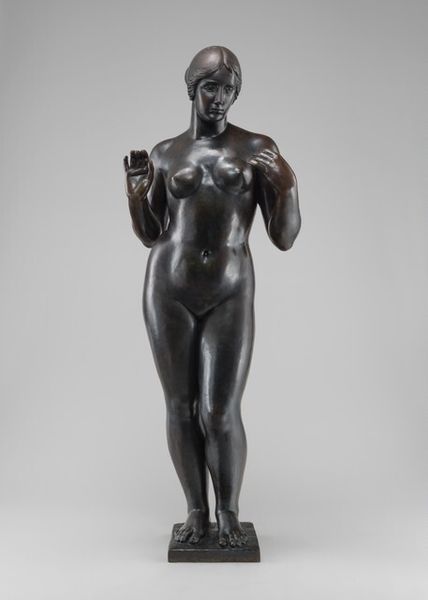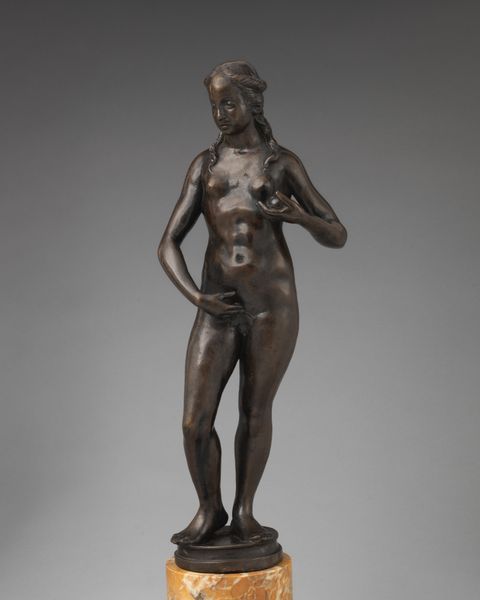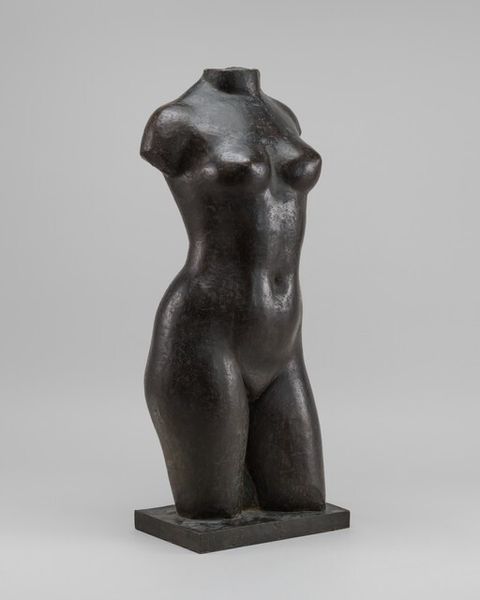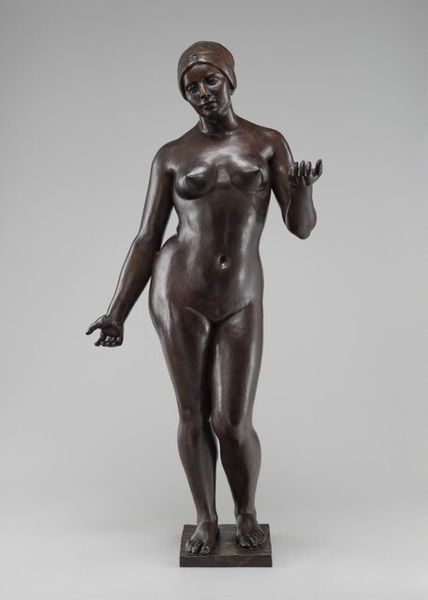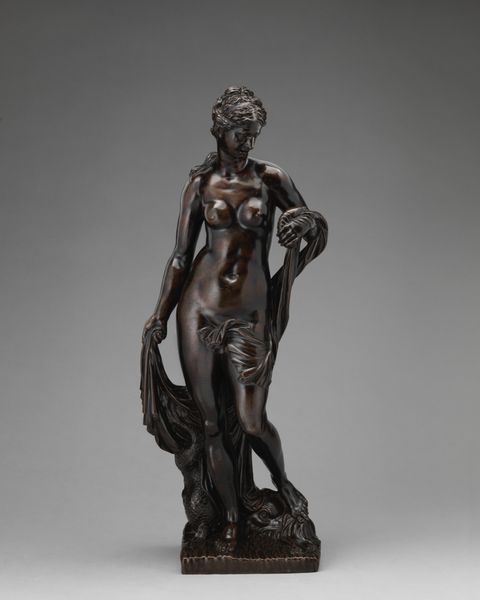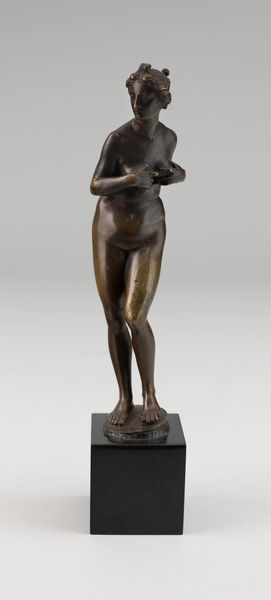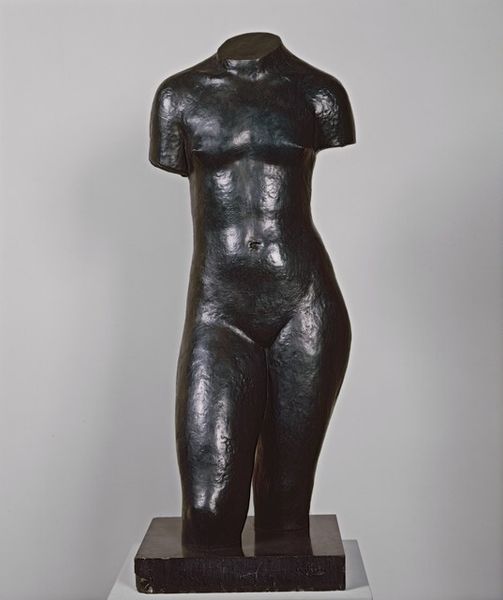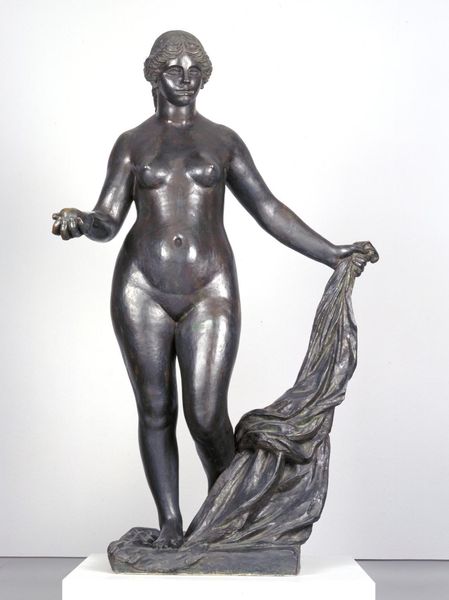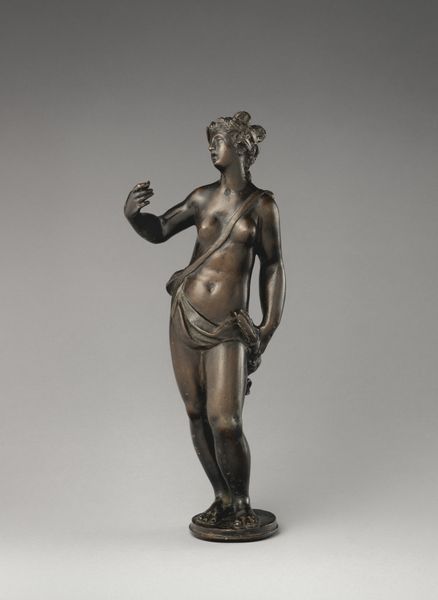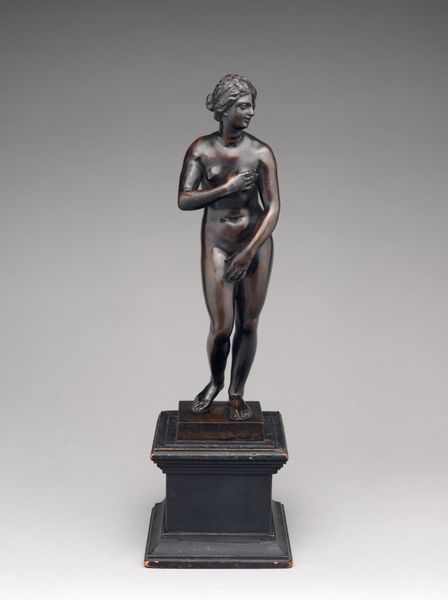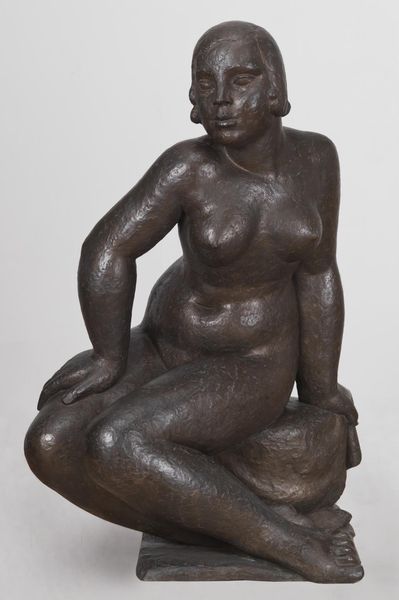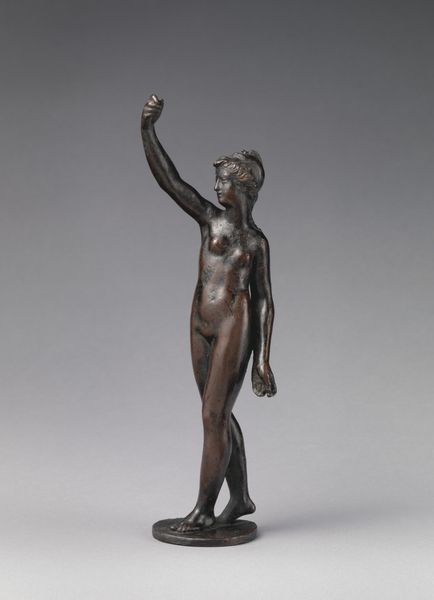
bronze, sculpture
#
sculpture
#
classical-realism
#
bronze
#
figuration
#
sculpture
#
nude
#
modernism
Dimensions: overall: 63.5 × 13.97 × 13.97 cm (25 × 5 1/2 × 5 1/2 in.)
Copyright: National Gallery of Art: CC0 1.0
Editor: Here we have Aristide Maillol's "Standing Bather," a bronze sculpture created sometime in the first half of the 20th century. I'm immediately struck by its almost monumental stillness, a real sense of weight and presence despite its moderate size. What aspects of this sculpture particularly resonate with you? Curator: This sculpture really invites us to think about the role of classical ideals within early Modernism. Maillol consciously referenced classical Greek sculpture, but he wasn't simply replicating it. Consider how museums at the time presented these classical forms as the epitome of beauty and artistic achievement, thereby shaping artistic aspirations and public taste. What does Maillol do to either reinforce or challenge that idealized representation? Editor: I guess by making the figure very grounded, less overtly idealized? Curator: Precisely. Maillol subtly alters the proportions, creating a figure that feels less like a goddess and more like an everyday woman, albeit nude. This brings forth the important issue of the male gaze. Nudity in art has historically been a fraught subject, often perpetuating power dynamics. In what ways could this piece be seen as either subverting or conforming to those established norms? Editor: It seems more celebratory of the female form than objectifying, perhaps. Curator: Yes, the lack of idealization could be interpreted that way, suggesting an attempt to depict female strength and beauty outside of traditional objectification. It definitely exists in the public sphere, engaging viewers in a dialogue about aesthetics, representation, and the ongoing influence of the past. Editor: That’s really helpful. I’ll never look at this the same way! Curator: It highlights how much museums and public spaces influence how we experience and understand art. It also underlines the importance of art that both responds to and reinterprets cultural conventions.
Comments
No comments
Be the first to comment and join the conversation on the ultimate creative platform.
